Page 12

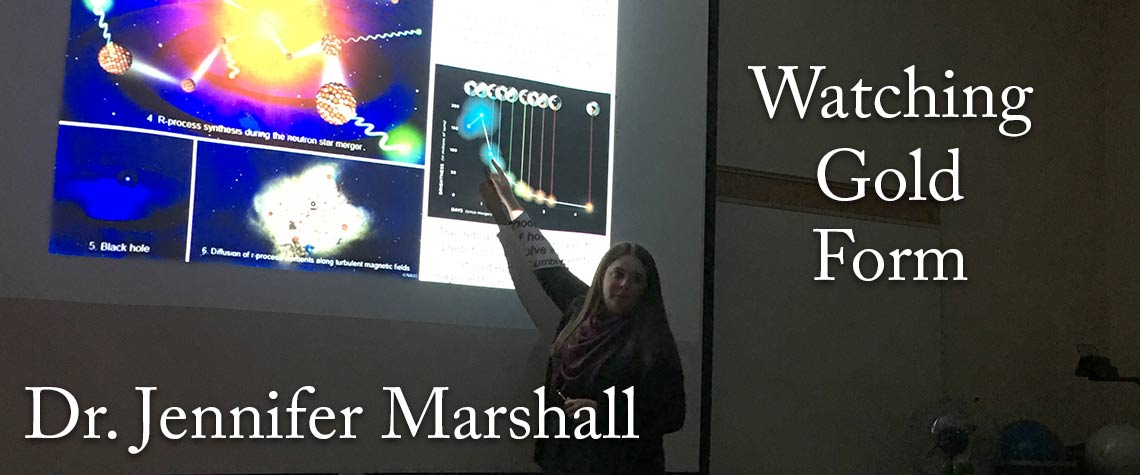
Brazos Valley Astronomy Club Speakers
Dr. Jennifer Marshall, a professional astronomer and professor in the Dept. of Physics and Astronomy at Texas A&M University, was the guest speaker at the Brazos Valley Astronomy Club on November 15, 2019. She spoke about recording the collision of two neutron stars in galaxy NGC 4993 and witnessing the aftermath of the event. The discovery of the collision, estimated to be about 130 million light-years from Earth, was first detected by LIGO, which detects tiny ripples in the fabric of space-time, called gravitational waves. The study of this event will help astronomers have a better understanding how the heavier elements are created in our universe as a result of a kilonova, a neutron star collision and explosion.
For decades humans have sought to understand the formation mechanisms of every element on the Periodic Table. For the first time, this is an obtainable goal. Dr. Marshall described these recent advances and discussed the future of this field.
Recent years have seen several key scientific developments that have greatly advanced our understanding of stellar nucleosynthetic processes, i.e. the physics that describes the formation of the chemical elements in the Universe.
The following discoveries shed new light on the formation sites of the heaviest elements such as gold, silver, platinum, and uranium:
- the recent direct observation of a binary neutron star merger event enabled by the detection of gravitational waves that alerted astronomers to the event
- the discovery of dozens of satellite galaxies in orbit around our Milky Way galaxy, many of which contain stars with similar elemental abundances
- neutron star mergers
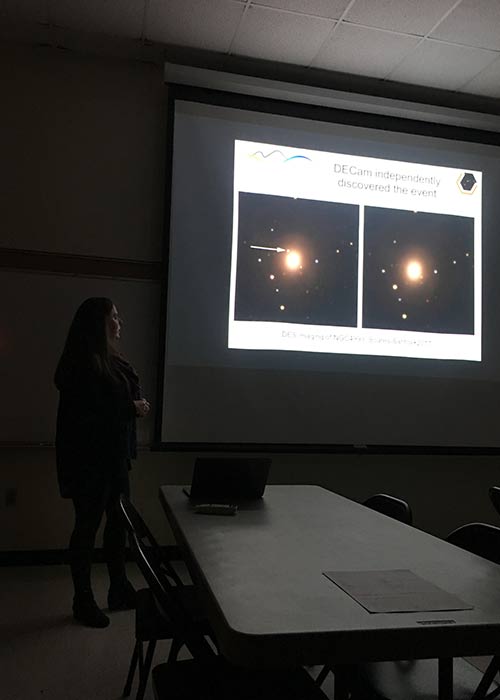
Dr. Jennifer Marshall compares “before” and “after” images of the bright glow created by the collision of two neutron stars in NGC4993. The collision was first discovered and recorded in August 2017.

Periodic table showing origin of the solar system elements
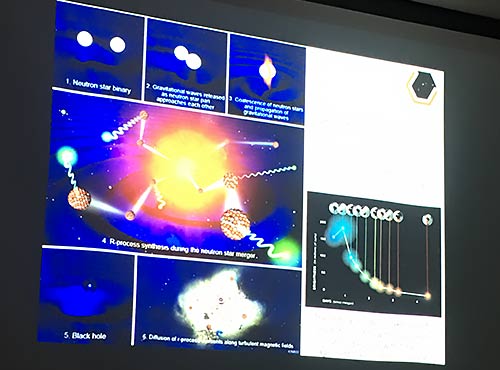
Sequence of events starting with collision of binary neutron stars and ending with diffusion of r-process elements along turbulent magnetic fields
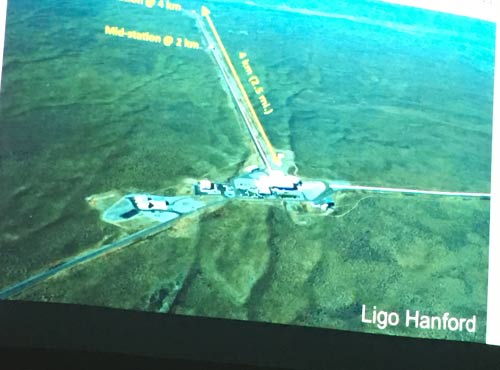
LIGO Hanford-Laser Interferometer Gravitational-Wave Observatory in the state of Washington records gravitational waves, not visible light
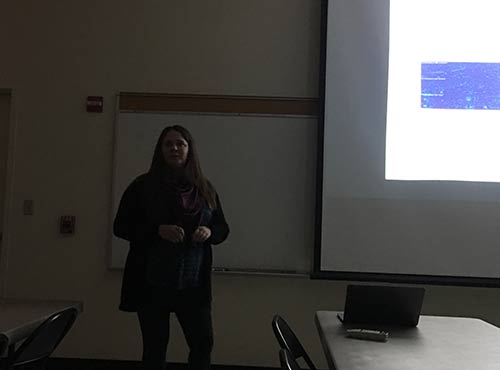
Dr. Marshall continues discussion of recording observation of two colliding stars and its impact on the understanding of the creation of heavy elements
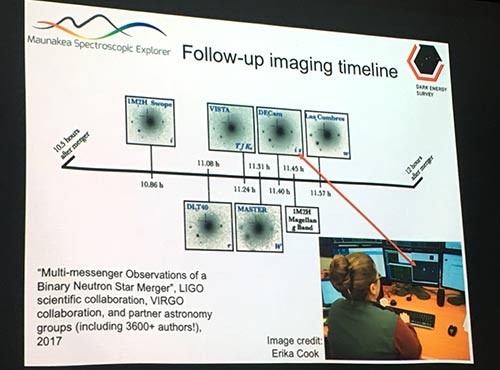
Dr. Marshall's image showing results of collision between two neutron stars, called a kilonova, and captured for the first time

Dr. Marshall - one of 3600+ authors and partner astronomy groups credited with observing and recording the kilonova